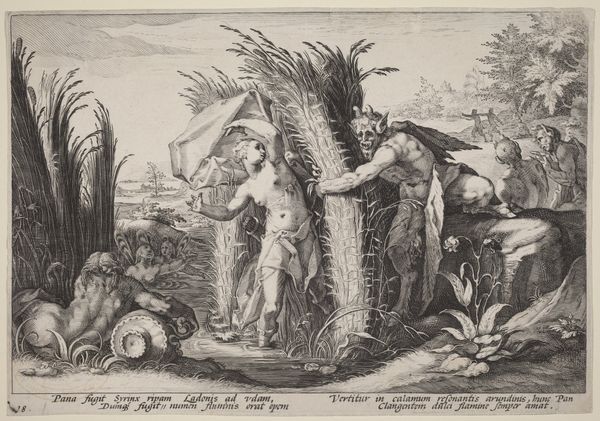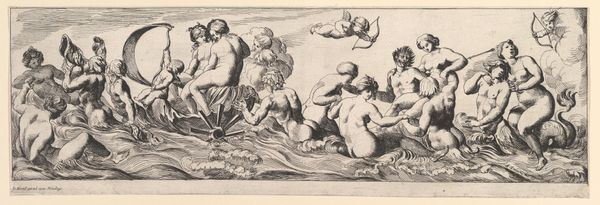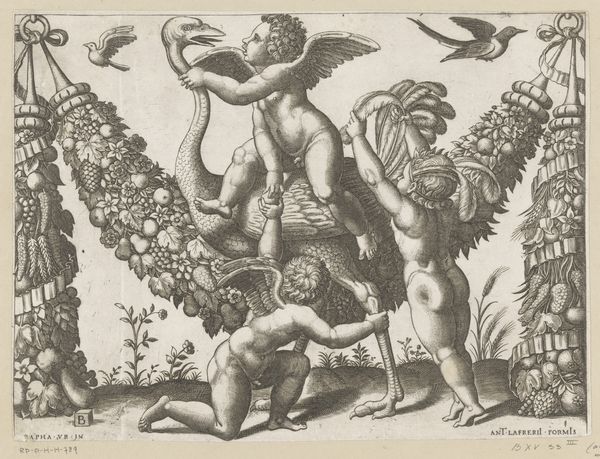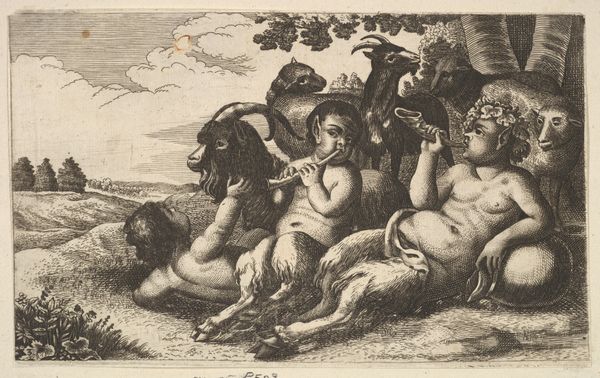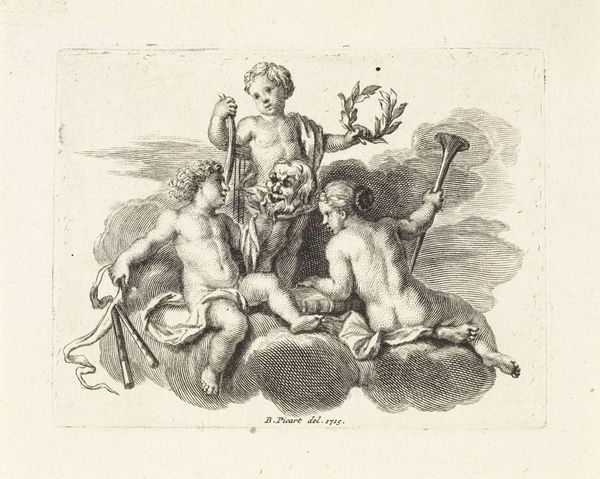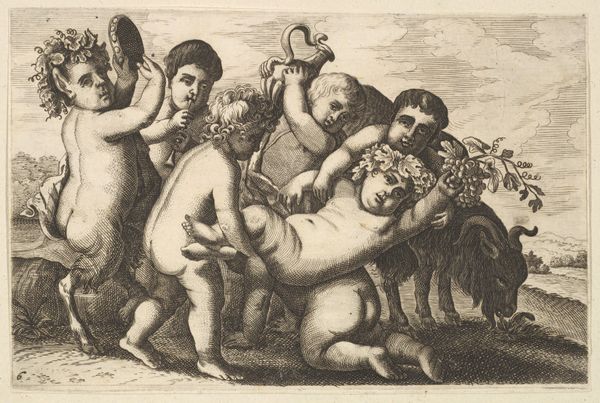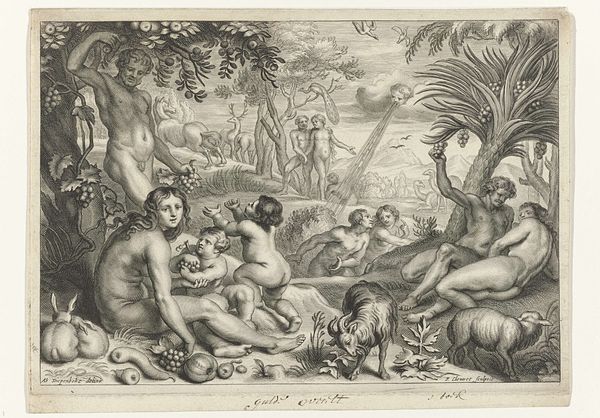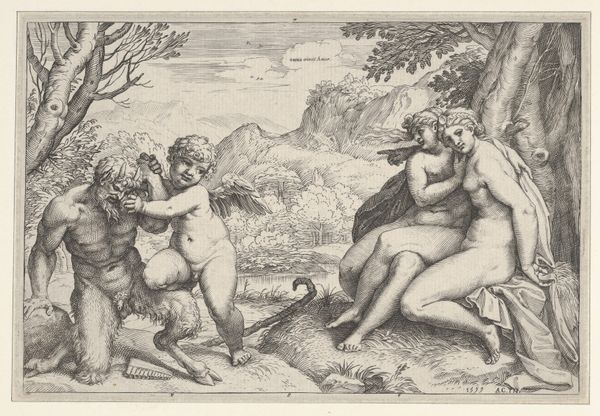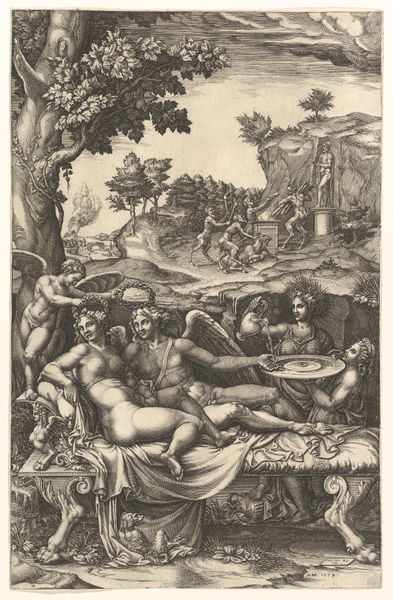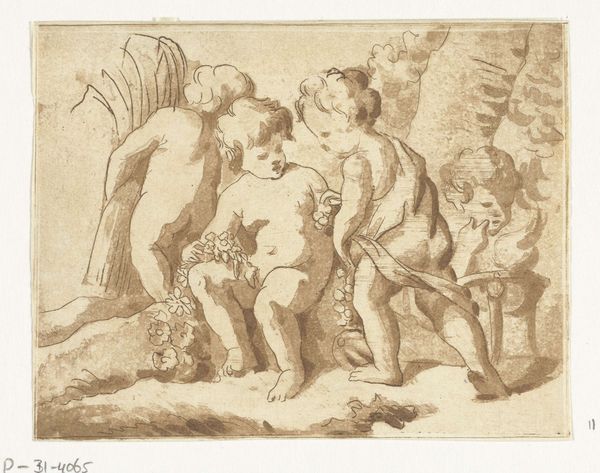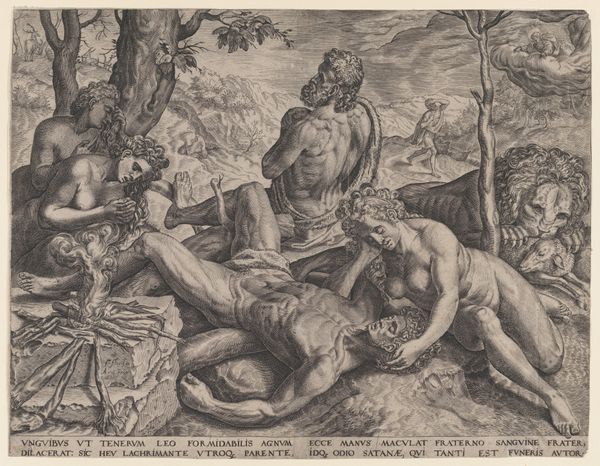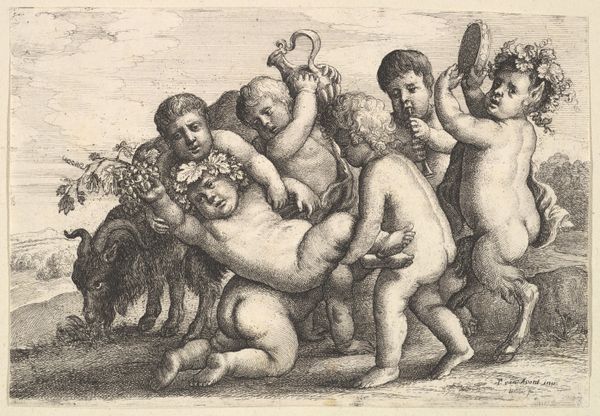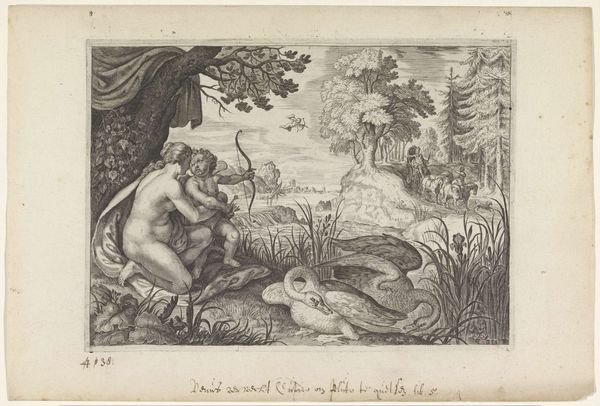
drawing, print, etching, engraving
drawing
allegory
baroque
etching
landscape
figuration
engraving
Editor: This is "Water" by Wenceslaus Hollar, created sometime between 1642 and 1652. It's an etching, and I’m struck by its dreamlike quality. It’s odd to see children playing with fish flowing out of a vase like that. What is going on here? How do you interpret this work? Curator: Well, before we dive into a specific interpretation, let's consider Hollar's historical context. He lived through tumultuous times marked by widespread conflict. Now, with that said, this work isn’t simply about artistic representation. This allegorical portrayal speaks to something more profound in this era: What role might water—and its accessibility—have played in societal structures, given this backdrop of conflict and potential displacement? Editor: So you’re suggesting the image has something to do with…power? Curator: Exactly. Who controls the source, who benefits? It also suggests a relationship to ideas around gender roles and the environment as both exploited for resource. This image encourages to reconsider our understanding of "play" in artistic renderings. In a period marked by social disruption, artistic expressions reflect this sense of unease. Is this scene truly idyllic or a manifestation of deeper anxieties? Editor: I never thought of it that way before. Seeing it as connected to societal and political issues makes it far more interesting than just a pretty scene of kids with fish. Curator: These types of images can act as more than decorations, can’t they? What questions do you now want to pose based on this idea about water? Editor: Now I’m curious about how access to resources like water shaped social hierarchies in the 17th century. Thanks. I think it will be useful to many listeners.
Comments
No comments
Be the first to comment and join the conversation on the ultimate creative platform.
